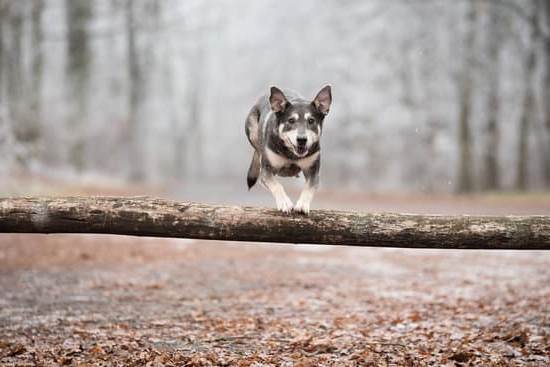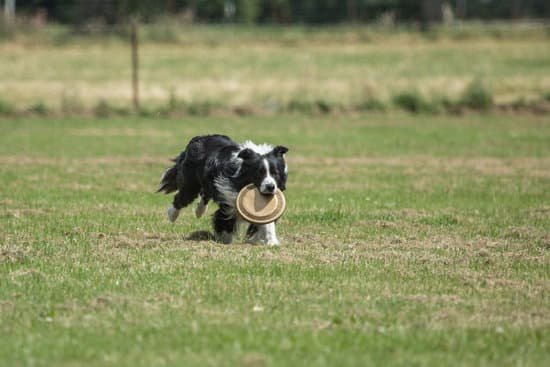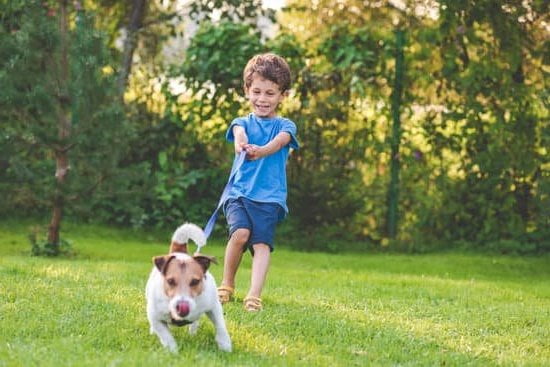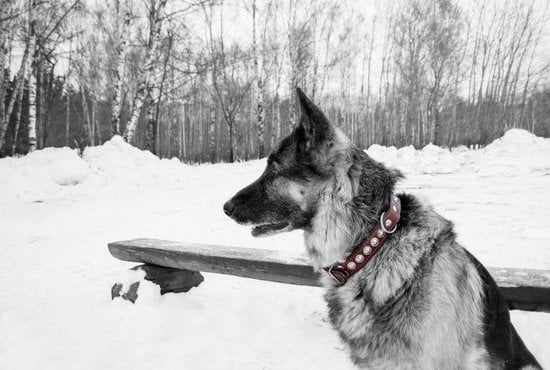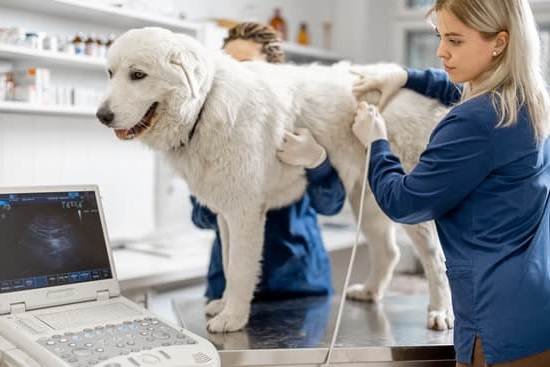Does your beloved furry friend experience anxiety? Anxiety in dogs can manifest in various ways, from destructive behavior to excessive barking. In this article, we will explore the signs and symptoms of anxiety in dogs and the importance of proper training for anxious pups.
We’ll also discuss positive reinforcement techniques, establishing routines, socialization, as well as exercise and mental stimulation strategies to help ease your dog’s anxiety. Additionally, we’ll touch on seeking professional help and provide you with valuable training resources and tools. If you’re wondering how to train an anxiety dog, you’ve come to the right place.
Anxiety in dogs can be a distressing experience for both the pet and their owner. Understanding what triggers this anxiety is crucial in addressing it effectively. Signs of anxiety may include trembling, pacing, excessive panting, whining, or even aggressive behavior. Recognizing these signs is the first step towards alleviating your dog’s stress.
Training plays a fundamental role in helping anxious dogs cope with their emotions and behaviors. Through positive reinforcement techniques and establishing a consistent routine, you can aid your canine companion in feeling more secure and confident. Additionally, socialization and desensitization can gradually help them become accustomed to previously fear-inducing situations. Regular exercise and mental stimulation activities are also key components of managing anxiety in dogs.
While our guidance will be beneficial for many pet owners dealing with anxious dogs, seeking professional help may be necessary on certain occasions. There are reputable trainers and veterinarians who specialize in treating anxiety-related issues in dogs – don’t hesitate to reach out if needed. Need additional support? We’ve compiled a list of helpful resources and tools that will assist you as you embark on this journey to train an anxiety dog effectively.
Signs and Symptoms of Anxiety in Dogs
Anxiety in dogs can manifest in various signs and symptoms that may not always be obvious to pet owners. It’s important to be aware of these signs in order to provide the necessary training and support for an anxious dog.
Behavioral Signs
One of the most common behavioral signs of anxiety in dogs is excessive barking, pacing, or destructive behavior when left alone. Some dogs may also display aggression or fearfulness towards strangers or other animals, while others may have accidents indoors despite being house-trained.
Physical Signs
Anxious dogs may exhibit physical symptoms such as trembling, panting, or excessive drooling. They may also show signs of restlessness, with an inability to settle down even when there are no apparent triggers for their agitation.
Changes in Eating Habits
Another sign of anxiety in dogs is a change in their eating habits. This can include loss of appetite or alternatively, stress-related overeating. Some dogs may also exhibit digestive issues such as vomiting or diarrhea due to their anxiety.
Recognizing these signs and symptoms is crucial in addressing the anxiety in dogs and providing them with the necessary training and support they need for a better quality of life.
Importance of Training for Anxious Dogs
Understanding the importance of training for anxious dogs is crucial in helping them manage their anxiety and live a happy, healthy life. Training not only helps anxious dogs learn to cope with their fears and triggers, but it also strengthens the bond between the dog and its owner. Anxious dogs often display destructive behaviors such as chewing, excessive barking, or attempts to escape, and proper training can help address these issues.
Training provides anxious dogs with a sense of structure and security, which is essential in managing their anxiety. By teaching them obedience commands and providing mental stimulation through training exercises, anxious dogs can build confidence and learn how to respond appropriately in stressful situations. Additionally, training techniques such as positive reinforcement can help change an anxious dog’s emotional response to certain triggers, ultimately reducing their overall anxiety levels.
Moreover, training for anxious dogs can have a positive impact on their overall well-being. When properly trained, anxious dogs are more likely to feel safe and secure in various environments. This reduces their stress levels and allows them to enjoy social interactions with people and other animals. Overall, the importance of training for anxious dogs cannot be overstated as it plays a significant role in helping them overcome their anxiety and lead fulfilling lives.
Positive Reinforcement Training Techniques for Anxious Dogs
When it comes to training anxious dogs, positive reinforcement techniques can be incredibly effective in helping them overcome their anxiety and build confidence. Here are some key positive reinforcement training techniques that can be used for anxious dogs:
1. Desensitization: This involves exposing the dog to the source of their anxiety in a controlled and gradual manner, while using positive reinforcement to help them associate the trigger with something positive. For example, if a dog is fearful of other dogs, desensitization would involve gradually introducing them to other dogs in a calm and controlled setting, while rewarding them with treats or praise for calm behavior.
2. Counterconditioning: This technique involves changing the dog’s emotional response to their anxiety trigger by associating it with something pleasurable. For example, if a dog is anxious around loud noises, counterconditioning would involve pairing the sound of the noise with something the dog enjoys, such as playtime or treats.
3. Clicker training: Clicker training is a popular positive reinforcement technique that involves using a clicker to mark desired behaviors, followed by a reward such as treats or praise. This method can be particularly effective for anxious dogs, as it helps to clearly communicate when they have done something right.
These positive reinforcement training techniques can help anxious dogs feel more comfortable and confident in various situations, ultimately improving their overall well-being and quality of life. It’s important to be patient and consistent when using these techniques, as progress may take time but can ultimately make a significant difference for an anxious dog.
Establishing a Routine for Anxious Dogs
Consistency Is Key
For anxious dogs, having a consistent routine can provide them with a sense of security and predictability. This means feeding them at the same times every day, taking them for walks at consistent times, and establishing a regular bedtime and wake-up time. By sticking to a routine, you can help reduce their anxiety by providing structure and stability in their daily lives.
Creating Calm Environments
In addition to establishing a daily routine, it’s important to create calm environments for anxious dogs. This means providing them with a quiet and peaceful space where they can relax and feel safe. Avoiding sudden changes or disruptions in their environment can also help reduce their stress levels. Providing them with a cozy bed or crate where they can retreat to when feeling overwhelmed can also be beneficial for managing their anxiety.
Training Sessions Within the Routine
Incorporating positive reinforcement training sessions into your dog’s daily routine can also be helpful in managing their anxiety. These sessions not only provide mental stimulation but also help build confidence and strengthen the bond between you and your dog. By including short training sessions as part of their daily routine, you can help redirect their focus away from their anxious behavior and onto more positive activities.
By establishing a consistent routine, creating calm environments, and incorporating training sessions into your dog’s daily schedule, you can effectively manage their anxiety and provide them with the support they need to feel safe and secure in their environment.
Socialization and Desensitization for Anxious Dogs
When it comes to training an anxious dog, socialization and desensitization are essential aspects that should not be overlooked. Here are some tips to help your anxious dog become more comfortable in various social situations:
1. Gradual Exposure: Introduce your anxious dog to new people, places, and situations gradually. This can help them feel more at ease and less overwhelmed by their surroundings.
2. Positive Experiences: Create positive experiences for your anxious dog during socialization by offering treats, praise, and rewards when they exhibit calm behavior in unfamiliar settings.
3. Controlled Environment: When exposing your anxious dog to new environments or people, make sure the setting is controlled and safe. This can help prevent any negative experiences from reinforcing their anxiety.
It’s important to remember that each dog is unique, so be patient and understanding as you work on socializing and desensitizing your anxious dog. Seeking professional help from a certified dog trainer or animal behavior specialist can also provide valuable guidance in this process.
Exercise and Mental Stimulation for Anxious Dogs
Exercise and mental stimulation are crucial for helping anxious dogs manage their anxiety. Regular physical activity can help reduce stress and promote a sense of well-being in dogs. Engaging in activities such as walking, running, playing fetch, or participating in dog sports can also provide an outlet for excess energy, which can contribute to reducing anxiety levels in dogs.
Mental stimulation is equally important for anxious dogs. Providing them with interactive toys, puzzle feeders, and training games can help keep their minds occupied and prevent boredom, which is often linked to the development of anxiety-related behaviors in dogs. Mental enrichment activities also help build a dog’s confidence and improve their overall emotional well-being.
It’s essential to tailor the exercise and mental stimulation activities to suit your dog’s individual needs. Some dogs may benefit from more intense physical activities, while others may prefer gentler exercises. Similarly, while some dogs may enjoy solving complex puzzles, others may find simple tasks more engaging. Understanding your dog’s preferences and energy levels is key to providing them with the appropriate exercise and mental stimulation they need to manage their anxiety effectively.
| Activity | Benefit |
|---|---|
| Walking/Running | Reduces stress and promotes well-being |
| Interactive Toys/Puzzle Feeders | Prevents boredom and improves mental well-being |
| Dog Sports/Training Games | Provides an outlet for excess energy and builds confidence |
Seeking Professional Help for Anxious Dogs
Understanding that some cases of anxiety in dogs may be too severe to address on your own is crucial. In these instances, seeking professional help is the best course of action. A veterinarian or a professional dog trainer who specializes in anxiety issues can provide valuable insight and guidance for training an anxious dog.
Professional help can come in the form of behavioral therapy, medication, or a combination of both. Some dogs may need prescription medication to manage their anxiety, while others may benefit from behavioral modification techniques under the guidance of a professional. It’s important to consult with a veterinarian or a certified animal behaviorist to determine the best approach for your dog’s specific needs.
When seeking professional help for an anxious dog, it’s essential to find a qualified and experienced professional. Look for certifications, relevant experience, and positive reviews from previous clients. Additionally, consider consulting with multiple professionals to get different perspectives on your dog’s condition and potential treatment options.
| Professional Help Options | Description |
|---|---|
| Behavioral Therapy | This option involves working with a professional to modify the dog’s behavior through various techniques. |
| Medication | In some cases, dogs may benefit from prescription medication to manage their anxiety symptoms. |
| Certifications/Experience | Look for professionals with relevant certifications and extensive experience in dealing with anxious dogs. |
Training Resources and Tools for Anxious Dogs
In conclusion, training an anxious dog requires patience, understanding, and the use of appropriate resources and tools. It is important to recognize the signs and symptoms of anxiety in dogs and to understand the underlying causes in order to provide effective training. Positive reinforcement techniques are highly recommended, as they help build confidence and trust in anxious dogs. Establishing a routine, socialization, desensitization, regular exercise, and mental stimulation are also essential components of training for anxious dogs.
When it comes to seeking professional help for anxious dogs, it is important to find a reputable trainer or behaviorist who has experience working with anxious animals. They can provide guidance and support tailored to the specific needs of the dog.
Additionally, there are various training resources and tools available for anxious dogs, including calming aids such as anxiety vests or wraps, pheromone diffusers, soothing music or white noise machines, interactive toys for mental stimulation, as well as online resources such as videos and articles on anxiety training for dogs.
Frequently Asked Questions
How Do You Calm an Anxious Dog?
Calming an anxious dog can be done through various techniques. One approach is to create a safe and soothing environment for the dog, such as using a comfortable bed or blanket in a quiet area.
Additionally, providing physical touch and gentle massage can help to reassure an anxious dog. Some dogs also respond well to calming music or pheromone diffusers specifically designed for dogs.
Can Anxious Dogs Be Trained?
Yes, anxious dogs can be trained to manage their anxiety. This often involves behavior modification techniques, which may include desensitization and counter-conditioning exercises. Working with a professional dog trainer or behaviorist can help develop a training plan tailored to the individual dog’s needs. Consistent training and positive reinforcement can help reduce anxiety in dogs over time.
What Are the First Signs of Stress in a Dog?
The first signs of stress in a dog may include excessive panting, pacing, trembling, yawning, or drooling. Dogs may also exhibit changes in their body language, such as tense muscles or avoiding eye contact.
Some dogs show stress through destructive behaviors like chewing or digging. It’s important for pet owners to be aware of these signs so they can address their dog’s stress before it escalates into more severe anxiety issues.

Welcome to the blog! I am a professional dog trainer and have been working with dogs for many years. In this blog, I will be discussing various topics related to dog training, including tips, tricks, and advice. I hope you find this information helpful and informative. Thanks for reading!

